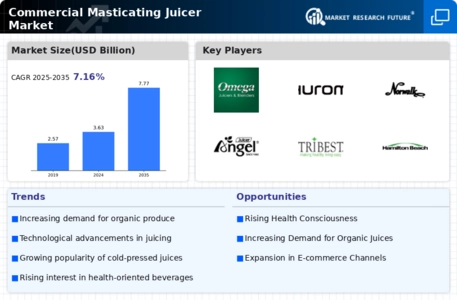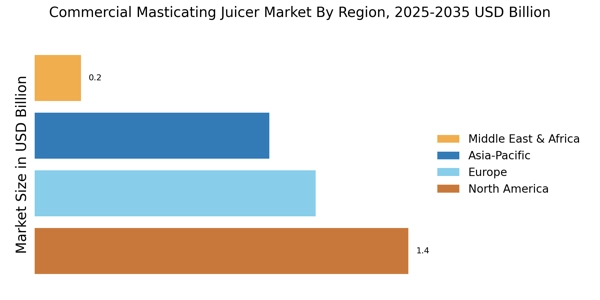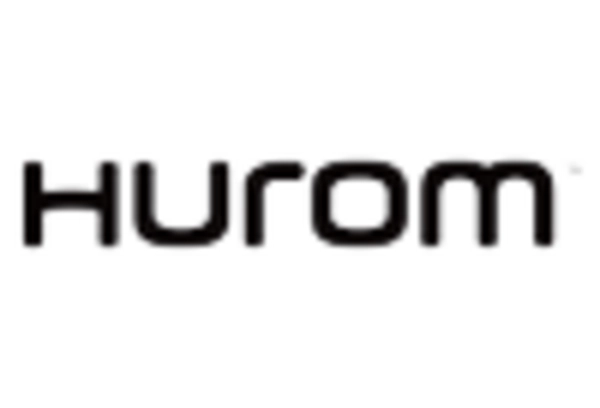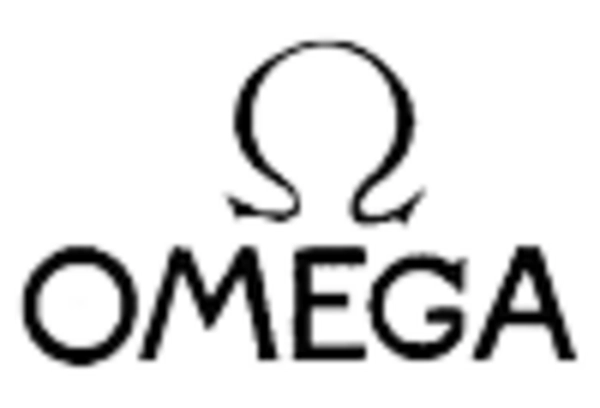Consumer Education and Awareness
Consumer education regarding the benefits of fresh juices is a crucial driver for the Commercial Masticating Juicer Market. As more individuals become aware of the nutritional advantages of consuming freshly extracted juices, the demand for juicing equipment is expected to rise. Educational campaigns and health initiatives are increasingly promoting the consumption of fruits and vegetables, which in turn encourages consumers to invest in high-quality juicers. Market Research Future suggest that as awareness grows, so does the willingness to purchase premium juicing equipment, including masticating juicers. This trend indicates a potential for sustained growth in the commercial masticating juicer market as consumers prioritize health and nutrition.
Growth of the Food Service Industry
The expansion of the food service industry is a significant driver for the Commercial Masticating Juicer Market. With the rise of health-focused restaurants, juice bars, and cafes, there is an increasing need for high-quality juicing equipment. The food service sector is projected to grow steadily, with many establishments incorporating fresh juices into their menus to attract health-conscious consumers. This trend is likely to result in heightened demand for commercial masticating juicers, as businesses seek reliable and efficient equipment to produce fresh, nutrient-rich beverages. The synergy between the food service industry's growth and the juicing market presents a promising opportunity for masticating juicer manufacturers.
Rising Demand for Healthy Beverages
The increasing consumer inclination towards health and wellness is a primary driver for the Commercial Masticating Juicer Market. As individuals become more health-conscious, the demand for nutrient-rich beverages has surged. This trend is reflected in market data, indicating that the juice market is projected to grow at a compound annual growth rate of approximately 5% over the next few years. Masticating juicers, known for their ability to extract maximum nutrients and enzymes from fruits and vegetables, are particularly favored. This shift towards healthier beverage options is likely to propel the sales of commercial masticating juicers, as businesses seek to meet consumer preferences for fresh, organic, and nutrient-dense juices.
Technological Innovations in Juicing
Technological advancements play a pivotal role in shaping the Commercial Masticating Juicer Market. Innovations such as improved motor efficiency, enhanced extraction techniques, and user-friendly designs are making masticating juicers more appealing to commercial establishments. The integration of smart technology, allowing for precise control over juicing processes, is also gaining traction. Market data indicates that the introduction of advanced features in juicers is expected to boost sales, as businesses look for equipment that enhances productivity and quality. As technology continues to evolve, the commercial masticating juicer market is likely to witness significant growth driven by these innovations.
Sustainability and Eco-Friendly Practices
Sustainability has emerged as a crucial factor influencing consumer choices, thereby impacting the Commercial Masticating Juicer Market. As environmental concerns grow, consumers are increasingly seeking products that align with eco-friendly practices. Masticating juicers, often made from sustainable materials and designed for energy efficiency, appeal to this demographic. Market analysis suggests that the demand for sustainable kitchen appliances is on the rise, with a notable increase in sales of eco-friendly juicers. Businesses that adopt sustainable practices in their operations are likely to attract environmentally conscious consumers, further driving the growth of the commercial masticating juicer segment.


















Leave a Comment